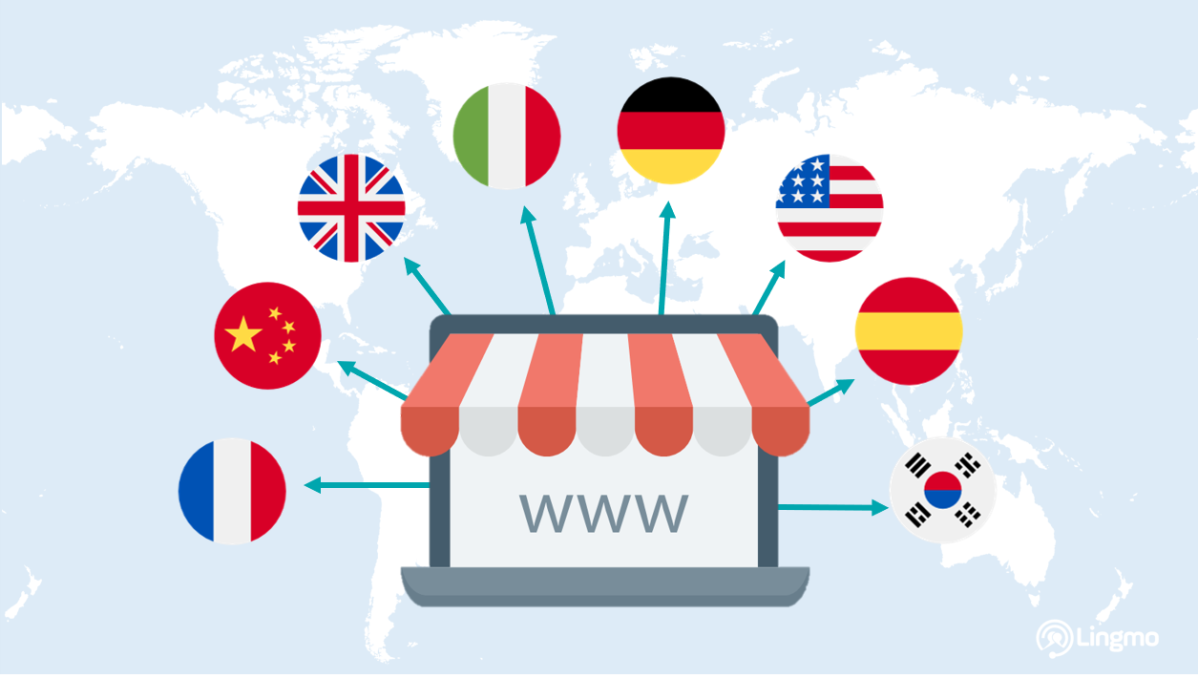
Learn how to build a multilingual website in WordPress and why you would consider offering your website in various languages.
If you serve a large and diverse customer base, you’ve likely been looking for ways to develop a multilingual website in WordPress, but much simpler.
While English is the most popular language on the web making up 58.8 percent of all websites, offering your website in various languages can help you reach more customers and engage with them in meaningful ways. Break down language barriers and show customers how much you care about them with a multilingual WordPress website.
You have two options when it comes to building a multilingual website. Review these options to find the one that is right for you.
WordPress offers plugins that help you offer instant website translation across various pages for any preferred language. The tool is powerful and allows a customer to browse the site in their preferred language, which can reduce reading fatigue and increase engagement.
And the great news for you is, you don’t have to do all the work. The translation software will do it for you. The catch is that the site is not multilingual. It still requires that your customers do a little work to see the content in their preferred language.
Truly multilingual websites make it possible for the user to switch between languages during navigation. This presents the site in a default language but gives the user the option to select their preferred language.
How many languages to offer is up to you but in the case of real multilingual websites, it will involve creating webpages in each language you plan to offer.
There are both pros and cons to having to supply various languages in this way. The pro is that you know the content is well-translated because you’ve overseen the process. The con is that you have to pay for a true translator to ensure the language sounds natural. No matter what though, you’ll know the content meets your customers’ needs and helps them resonate with you.
While it sounds complicated at first glance, once you get everything set up, you can manage the site with ease. If the translation part of the project intimidates you, know that you can start with content from a plugin like TranslatePress and have a translator then review the content for accuracy so you don’t have to start from scratch with every language you plan to offer.
Now that you know the work involved in making a website multilingual, you might be wondering why you would do this. Take a moment to learn the benefits of enabling a multilingual website.

Reading and reviewing content in your native language is less tiring. It also helps build a sense of trust and security with customers when they are online shopping. A European study found that 44 percent of customers who visit websites that are not in their native language feel like they are missing some of the content because they don’t fully understand it.
Even if you serve an audience solely based in the US, offering multiple languages can benefit your business in building better relationships with your customers. That’s because many Americans speak multiple languages in their homes. Only 78 percent of US households speak English primarily in the home, while 10 percent speak Spanish. The rest of US households are a mix of various languages at under 1 percent of the total population.
Google is a global company, meaning people come to the site to search for things in a variety of languages. If your site is only in English, it will provide English SEO benefits, which means you might be losing opportunities if your customers are searching for you in other languages.
A multilingual site helps you capture those searchers and rank for SEO in various languages and not just English. That means that Google will start serving up your content in other languages once you publish it.
Users are more likely to share content that is in their native language. This offers you greater visibility without the need to pay for ads. That increases your brand awareness and ROI from every sale since you won’t have to pay to earn those customers.
Armed with more information on multilingual websites and how they work, you’re ready to start building your WordPress site in various languages for the ultimate customer experience.
You need a single-language website to be the starting point for your multilingual site. Once you have everything set up the way you want it with content and design, you’ll be ready to translate that into various languages.
Ideally, this starts with a solid foundation of a custom website theme for speed and responsiveness. Otherwise, consider a premium WordPress theme that offers SEO value and a strong user experience.
The design you choose will apply to the various versions in other languages that you choose. So don’t skip this important step or rush it to get to the translation phase.
Get your content to a place where you feel it is complete and will need minimal ongoing changes. The more you change after translation, the more work it will involve.
Once the basics for your single-language site are in place, you’re ready to make it multilingual. Install a plugin, such as TranslatePress to aid in managing the various versions of your website.
Select the various languages you want to translate your website into. Most plugins will require a paid subscription for more than one language translation so choose your options carefully.
You can then make edits to the various translations in most plugins to make the site sound as natural to a native speaker as possible. This is where a professional translator comes in to help with nuance and context so that the content flows seamlessly and clearly.
If you can’t afford professional translations for all languages, you might leave some languages with auto-translations.
Translation plugins come with options for the language switcher. You can add neat features, such as a country flag to help users identify the language they want without the need to read. You can also choose where and how to display the language switcher to make it integrate with your website design well.
To take advantage of SEO benefits from a multilingual site, you’ll need to translate the metadata as well. Depending on the plugin you’ve chosen for your site, it might do this automatically. Just be sure that the various website versions have translated metadata before marking your project as complete.
New Light Digital has helped many multilingual companies serve their customers and their needs through websites written in their customers’ native languages. Schedule a free consultation now for a website strategy that includes everything from development to multilingual translation.
Further reading: